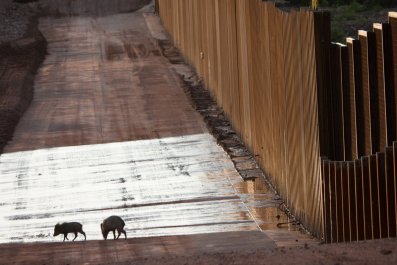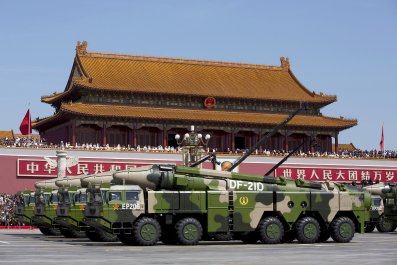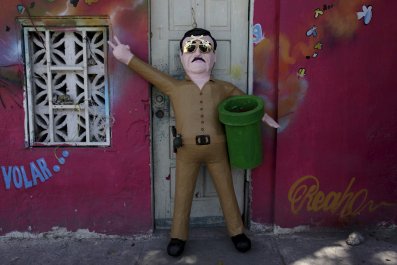Updated | People have plenty of reasons to despise cockroaches. They're wickedly speedy, nearly indestructible and somehow manage to go anywhere, getting through even the smallest spaces.
But these same qualities earn only the deepest admiration from professor Robert Full, a biomechanics expert at the University of California, Berkeley, and Kaushik Jayaram, a robotics researcher at Harvard University. "We know they can go anywhere—so we wondered how they do that," said Full. So the researchers used clear acrylic plastic to build tunnels with moveable ceilings that could lower to just 3 millimeters high and sent the American cockroach, Periplaneta americana, through while recording the insects with high-speed cameras. They reported their results February 8 in the journal Proceedings of the National Academy of Sciences. "We found they can compress themselves in half, down to a quarter of their standing height, about the same as two stacked pennies," says Full. "When they squeeze through the tiniest crack they experience compression 300 times their body weight."
In a separate test, the scientists repeatedly compressed the roaches. At pressures of nearly 900 times their body weight they flattened out and then bounced back unharmed thanks to flexible hinges between the stiff plates of their exoskeletons. (Full says says no animals were harmed during the study.)
Jayaram and Full also got an eye-opening look at how roaches manage to move so quickly. While upright, the bugs moved on their feet. When pressed to half their normal height, their legs splayed out and they were able to run by pushing with the sides of their legs, sprinting as quickly as 20 body lengths per second. At human size that would be 70 miles per hour.
The researchers then decided to build a robot version to mimic these qualities. They started with a six-legged bot made up of off-the-shelf materials: a battery, electronics, posterboard and overlapping sheets of polyester sheeting. They gave the palm-sized device a clever backronym: CRAM, for "compressible robot with articulated mechanism." When upright, the robot runs on its feet. Just under three inches tall, it can squish down to about half that height. When it does, its legs fold out and it walks on their sides like the roaches did in the lab.
For now, the lab robot is a tool to explore cockroaches' body movement. But Full says the model could have practical applications, especially because it can be built cheaply—the prototype cost just $75 and the researchers believe that mass production would lower the cost even further. "It could fill the need for a low-cost robot for search and rescue," he says. "Teams could use a swarm of them after a tornado, earthquake or explosion." Current disaster-site robots, like those used in bomb disposal, tend to be big, heavy and expensive. "They can't penetrate rubble," says Full. "The best soft robot inspiration is the cockroach because they can shape change but they also have stiff appendages."
Other research projects have explored making tiny devices that could climb through the intestines and other parts of the body—a natural place to use compressible robots.
Still, this is only an early prototype. Jayaram, the paper's lead author, is working on sensors and controls that would help make the robot useful for practical applications. And he and Full hope that future prototypes will be able to turn, climb and jump.
This article has been updated to reflect Kaushik Jayaram's latest credentials.



















